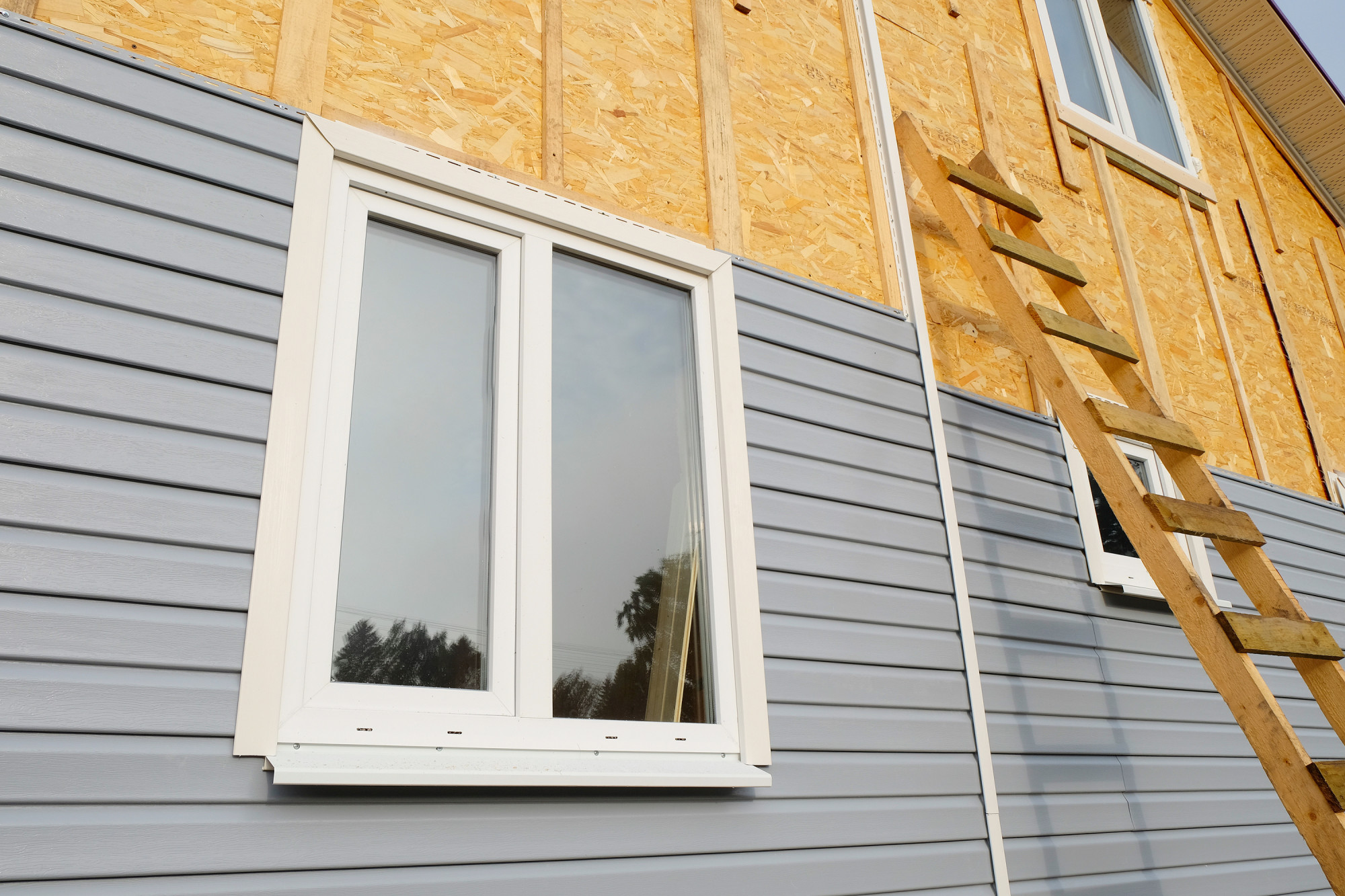Maintaining the siding of a home is more than a cosmetic concern; it’s a vital part of preserving the property’s value and functionality. Siding protects against weather, helps with insulation, and directly influences a home’s curb appeal. However, to maintain these benefits, regular upkeep is essential. Neglected siding can lead to problems like moisture damage and reduced energy efficiency, impacting both the appearance and integrity of a home.
This guide will focus on practical tips for effective siding maintenance. Covering various materials such as vinyl, wood, and fiber cement, we offer straightforward advice for each type. We’ll discuss how to spot early signs of damage, the best cleaning methods, and when to call in professionals.
Wear & Tear: Common Siding Issues
In this section, you’ll learn how to spot the telltale signs of wear and tear in your house siding. Recognizing issues such as cracks, fading, or mold early is essential for keeping your home’s exterior in top condition. Let’s start with one of the most common issues, cracks in your siding.
Cracks
Cracks in your house siding are clear indicators of wear and tear that shouldn’t be overlooked. Small cracks, while seemingly minor, can escalate into major issues by allowing moisture and pests to penetrate the siding. This can lead to significant damage over time. Pay particular attention to vinyl siding, which is prone to cracking under extreme weather changes due to its sensitivity to temperature variations.
In the case of wood siding, the natural cycle of moisture absorption and drying can cause the wood to expand and contract, leading to cracks. Regular inspection for cracks is crucial, especially after seasons of high humidity or drastic temperature changes.
Fading
Fading is a natural process for all siding materials, mainly due to continuous sun exposure. When fading becomes excessive or uneven, it often signals a deeper issue, such as a breakdown in the siding’s protective coating or overall material degradation. Fading is especially noticeable in darker-colored house siding.
To tackle this issue:
- Conduct regular inspections to spot uneven or excessive fading early.
- Consider applying a UV protective coating to safeguard the siding and extend its lifespan.
- If fading is advanced, consult a siding professional to determine whether a repaint or replacement is necessary. For example, our team at Magnolia provides home siding installation in New Jersey.
Effective management of siding fading involves a combination of regular check-ups and preventive care. This proactive strategy ensures both the aesthetic appeal and functional integrity of your home’s exterior.
Mold & Mildew
Mold and mildew on your house siding are not just cosmetic issues; they are clear signs of underlying moisture problems. These growths typically appear in areas with limited sunlight and environments with high humidity levels. Beyond affecting your home’s exterior appearance, mold, and mildew can pose health risks and lead to more extensive damage if left unchecked.
To combat this issue, you must regularly clean your siding to ensure effective moisture barriers are in place. This proactive approach helps to prevent the growth of mold and mildew, preserving both the look and structural integrity of your home.
Bubbling & Blistering
Bubbling and blistering on your sidings is a warning sign of excessive heat exposure or moisture issues. These defects are not just superficial; they indicate more serious underlying problems. For example, when you see paint bubbling or blistering on wood siding, it’s usually due to moisture getting trapped beneath the surface.
In the case of vinyl siding, the issue is often related to heat. Excessive heat can cause vinyl to bubble or warp, compromising the siding’s structural integrity and appearance. This type of damage is particularly common in areas that receive intense, direct sunlight.
Addressing these issues promptly is crucial. For wood siding, it may involve removing the damaged paint and treating the area to prevent moisture intrusion. For vinyl, it might mean replacing the affected sections or even reevaluating the siding’s suitability for your climate. Quick action can prevent further damage and maintain the longevity of your siding.
Peeling Paint or Loose Wallpaper
Peeling paint or loose wallpaper inside your house can unexpectedly signal problems with your exterior siding. Often, these interior issues arise when moisture breaches the siding and infiltrates the walls. This moisture can undermine the adhesion of paint and wallpaper, leading to noticeable peeling or loosening.
Such interior signs shouldn’t be overlooked as mere aesthetic concerns. They are often the first indicators of compromised siding integrity. Addressing these symptoms promptly can prevent more extensive and costly damage, both to the exterior siding and the interior walls of your home.
Increased Heating or Cooling Bills
A sudden increase in heating or cooling bills can be an indirect yet telling sign of siding wear. If your energy costs are rising without a clear reason, it might be due to deteriorating siding insulation. This issue is often not visible to the naked eye but significantly impacts your home’s energy efficiency.
To address this:
- Regularly monitor your energy bills for unexpected increases.
- Inspect your siding for any hidden damage or areas where insulation may have weakened.
These steps can help identify and rectify any insulation issues with your siding, ensuring your home remains energy-efficient and comfortable. Timely action in response to rising energy costs can lead to necessary repairs or upgrades, ultimately saving you money in the long run.
Repair and Replacement
Maintaining the integrity and appearance of your home’s siding often involves making timely decisions about repairs and replacements. This section will guide you through understanding when to tackle repairs yourself and when to seek professional help, as well as how to conduct a cost-benefit analysis of repairing versus replacing your siding.
DIY vs. Professional Repairs
When it comes to siding repairs, the choice between DIY and professional intervention largely hinges on the severity of the damage and your personal expertise. For minor issues, such as small cracks or a few loose panels, a DIY approach can be sufficient. These repairs often require basic tools and materials, and there’s a wealth of instructional content available to guide homeowners through the process. Tackling these small repairs yourself can save money and provide a sense of accomplishment.
However, it’s important to realistically assess your skill level. Complex repair tasks demand a higher level of expertise and the right set of tools. Mistakes in DIY repairs can lead to further damage or even safety hazards, negating any initial savings in costs.
For significant issues like widespread rot, structural damage, or large areas of deterioration, professional repairs are essential. Professional repairs often go beyond surface-level fixes, requiring an understanding of structural integrity and building codes. Professionals bring the necessary experience and equipment to handle these complex situations effectively.
Enlisting professional help ensures that the repairs are thorough, comply with local building codes, and, most importantly, restore the safety and integrity of your home. While this route may involve higher upfront costs, investing in professional repairs can prevent costly mistakes and provide peace of mind, knowing the job is done correctly. Ultimately, the decision should balance your DIY capabilities with the complexity of the repair task at hand, ensuring the best outcome for your home’s siding.
Repair vs. Replacement
Deciding whether to repair or replace your home’s siding is a critical decision that hinges on several factors. Initially, consider the age of the siding. If it’s relatively new, repairs might be more cost-effective. However, if the siding is nearing the end of its expected lifespan, replacement might be a wiser investment.
Assessing the extent of damage is also crucial. Minor, superficial damage often lends itself to repair, whereas extensive or structural damage might necessitate a complete replacement.
Energy efficiency is another key consideration. Damaged or aging siding can lead to increased energy costs due to poor insulation. If your siding is no longer effectively insulating your home, leading to higher heating and cooling bills, replacement with more energy-efficient materials could offer long-term savings.
Frequent, ongoing repairs are often more expensive than a one-time replacement, especially for older siding. Moreover, new sidings are generally more energy efficient, improve the look of your home, and increase the property value. That’s certainly a consideration if you’re looking for CertainTeed siding repair. Therefore, it’s essential to weigh the immediate cost against these long-term benefits when deciding between repair and replacement.
Long-Term Protection Strategies
Keeping your house siding in good shape for a long time means staying on top of regular upkeep. The first step is simple: clean the siding regularly. This helps keep it free from dirt and minor damage. While cleaning, you can also check for any small issues, like cracks or loose pieces, and fix them right away.
Quick fixes for small problems are key. If you notice something like a crack or a peeling spot, fixing it as soon as possible stops it from getting worse. This way, you avoid bigger repairs later on.
Another helpful tip is to use protective coatings on your siding. These coatings shield your siding from things like sun damage, moisture, and temperature changes. They can make your siding last longer, especially in areas with extreme weather.
Finally, make sure your home is well-insulated and ventilated. Good insulation stops moisture from building up and damaging your siding. Proper ventilation keeps it from getting too hot, which can also harm the siding.




